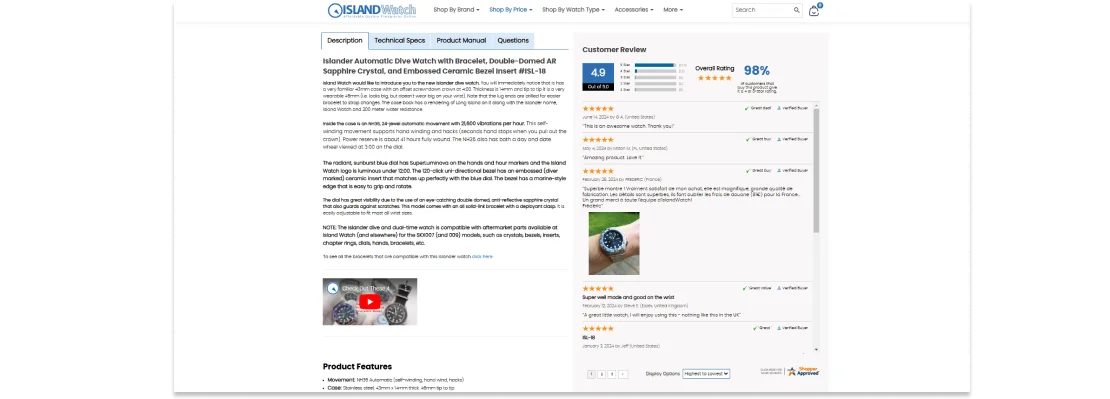
Search engine optimization (SEO) isn’t merely a technical requirement for BigCommerce stores; it’s a strategic pathway to business growth and increased revenue. In today’s digital landscape, with thousands of brands competing for online visibility, SEO ensures your store reaches the right audience precisely when they’re ready to buy. By optimizing your store’s presence on search engines, you’re attracting more traffic and, more importantly, drawing in shoppers with high purchase intent. For BigCommerce stores, a robust SEO strategy is essential for driving organic traffic, establishing brand credibility, and turning visitors into loyal customers. Without it, you risk losing out on potential revenue and fading into obscurity. In this blog, we’ll walk you through essential BigCommerce Search engine optimization tips, from foundational practices to advanced strategies.
Optimizing On-Page SEO Elements in BigCommerce
On-page SEO is a cornerstone of search engine optimization and a key component of increasing your BigCommerce store’s visibility. By refining elements like title tags, meta descriptions, and URL structure, you can significantly improve your search ranking and create a more seamless experience for visitors.
Title Tags and Meta Descriptions
Title tags are like the storefront signs of your online shop—they’re the first thing a potential customer sees in search results. Craft clear, descriptive titles that include targeted keywords relevant to each page. For meta descriptions, think of a brief yet compelling pitch. Though they may not directly affect ranking, well-written descriptions can improve click-through rates, encouraging users to visit your site.
 MAKDigital Example of meta description
MAKDigital Example of meta description
URL Structure
A clear and consistent URL structure not only helps with SEO but also makes your site more user-friendly. BigCommerce allows customization of URLs, so avoid using default URLs with random strings of numbers and letters. Instead, create descriptive URLs that reflect the content on the page (e.g., “/mens-running-shoes” instead of “/product123”).
Headings and Content Structure
Organize your content with structured headings (H1, H2) to improve readability and guide search engines. Each product or category page should have an H1 that accurately reflects the page’s primary topic. Secondary headings (H2) can break up information and make it easier for customers to navigate your content.
These on-page optimizations help search engines understand the content of your pages and improve the overall user experience, both of which are vital for SEO.
Mastering Keyword Research for BigCommerce SEO
Effective keyword research is essential in reaching the right audience. Tools like SEMrush, Google Keyword Planner or Ahrefs are excellent for discovering high-traffic terms related to your industry. However, focus not only on high-volume keywords but also on long-tail keywords—more specific phrases like “eco-friendly women’s running shoes” rather than simply “women’s shoes.” These longer phrases may have lower search volumes but often indicate higher intent, attracting visitors more likely to convert.
 SEMrush SEO Keyword Tool
SEMrush SEO Keyword Tool
Competitor analysis also provides insights into keyword gaps and opportunities. By examining the keywords your competitors rank for, you can find niche terms to target or identify unique content angles that set your store apart.
Leveraging BigCommerce’s Built-In SEO Features
BigCommerce offers a range of built-in tools and customization options to make SEO implementation straightforward.
For instance, customizable product pages allow you to optimize critical elements, like image alt text, product descriptions, and URLs, to improve your store’s visibility in search results. Alt text for images, for example, improves your site’s accessibility and boosts image search rankings.
Site speed is another essential SEO factor, with BigCommerce providing various features to help you maintain fast load times. Regularly compress images and remove unused scripts to keep your site running efficiently. Lastly, BigCommerce automatically generates an XML sitemap, making it easier for search engines to crawl and index your pages. Submitting this sitemap to platforms like Google Search Console ensures search engines can find and understand your content.
Enhancing Technical SEO for BigCommerce
Beyond content and keywords, technical SEO is essential for ensuring that your site is accessible, secure, and fast. With BigCommerce’s responsive themes, mobile optimization is largely handled; however, regularly test your site on mobile devices and make additional adjustments, like optimizing mobile navigation, to provide a seamless experience.
Security is another critical component. BigCommerce includes SSL certificates to keep your site secure with HTTPS, which not only protects customer data but also boosts search rankings. Google and other search engines prioritize secure sites, so ensuring HTTPS across your store is vital.
To keep your site fast and responsive, pay attention to page load speed. Regularly audit your site using tools like Google PageSpeed Insights, and take steps to reduce load times. Compressing images and using browser caching can further improve your site’s speed, helping you rank higher and keeping customers on your pages longer.
Implementing Content Marketing Strategies for BigCommerce
Content marketing supports SEO by providing valuable information to attract and engage visitors. For BigCommerce stores, adding a blog is an excellent way to drive organic traffic. Blog posts can cover topics relevant to your industry and products, positioning your store as an authority. Well-optimized blog content can rank for relevant keywords and provide ongoing value to both new and returning visitors.
 Long Island Watch detailed product description
Long Island Watch detailed product description
Unique, detailed product descriptions are also crucial. Avoid generic or manufacturer-provided descriptions, which often lack specific keywords and personality. Instead, focus on creating descriptions that highlight each product’s unique benefits and speak directly to your audience’s needs. In addition, encourage user-generated content like reviews, which can add fresh, keyword-rich content to your pages and build trust with potential customers.
Tracking SEO Performance on BigCommerce
Finally, measuring your SEO efforts is essential to improving your strategy over time. With Google Analytics, you can monitor crucial metrics like organic traffic, bounce rates, and user behavior. BigCommerce’s built-in analytics also offers insights into traffic sources, conversion rates, and revenue data.
Define clear KPIs (key performance indicators) like conversion rate, average session duration, and bounce rate to understand how your SEO efforts are translating into business results. Regularly reviewing these metrics enables you to refine your approach, ensuring your SEO strategy aligns with your goals and continues to drive growth.
Conclusion: Boosting BigCommerce Success Through Smart SEO
In today’s competitive market, SEO is more than a technical requirement for BigCommerce stores; it’s a vital strategy for achieving long-term growth. By optimizing your site according to the best practices outlined here, you’re setting up a strong foundation for success, enhancing visibility, and driving traffic that converts.
Remember, SEO is an ongoing process—continuously optimizing and adapting your strategy will yield lasting benefits. For personalized BigCommerce SEO guidance, feel free to contact us. Together, we can create a tailored SEO strategy that drives visibility, grows your customer base, and maximizes revenue.

 Eashan Mehta
Eashan Mehta





